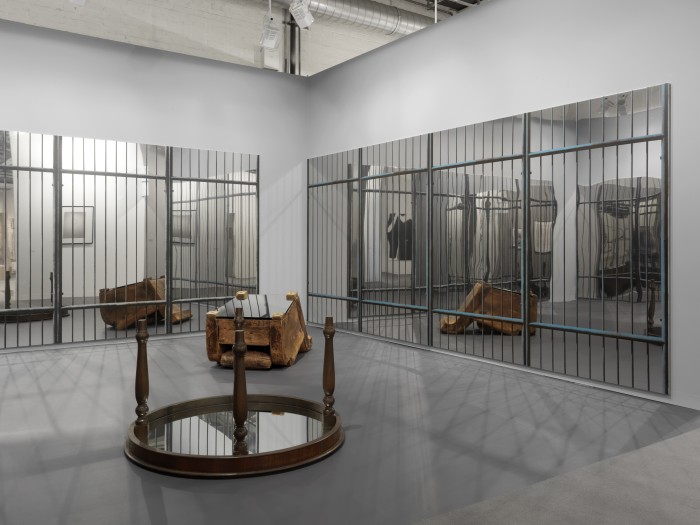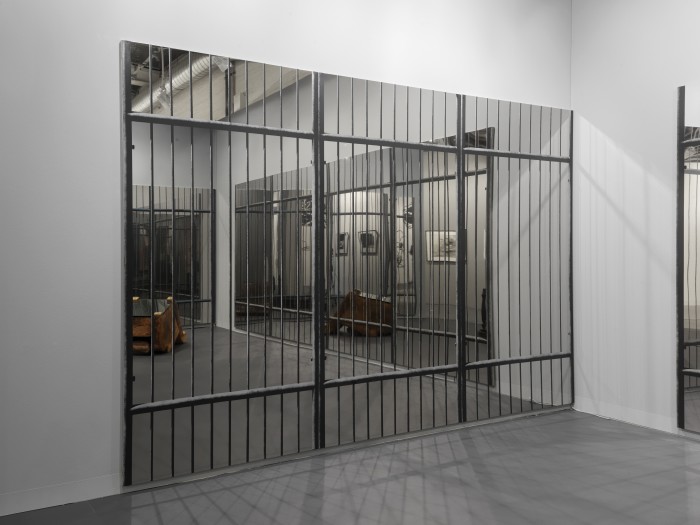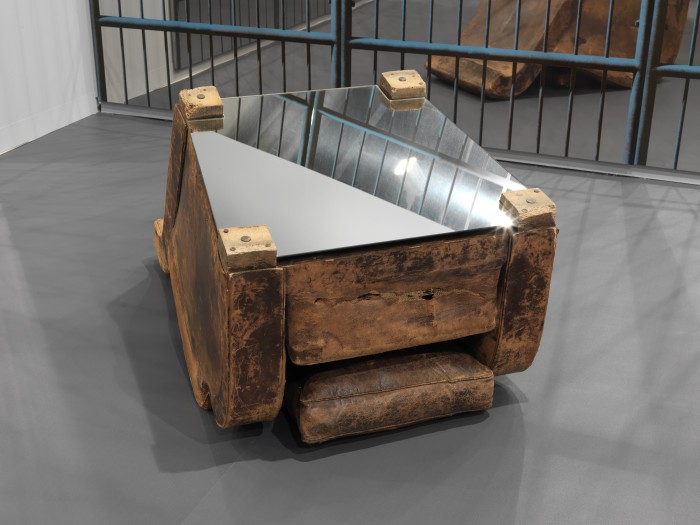Luxembourg & Dayan is pleased to announce its participation in the Art Basel 2015 Feature section (Booth J7) with a solo presentation devoted to artist Michelangelo Pistoletto (b.1933, Biella), a pivotal figure of Italian Arte Povera. The presentation will bring together two of the artist’s most politically-charged bodies of work from the late 1960s and 1970s: La Gabbia and Mobili Capovolti.Until now these works have been less familiar to a wide audience, but are central to the history of the artist’s development. Conceived as an immersive installation, Luxembourg & Dayan’s presentation captures the radical, enveloping nature of Pistoletto’s art in relation to the revolutionary tides that were sweeping Italy during the period referred to as the Anni di pimobo (Years of Lead).
Visitors to Luxembourg & Dayan’s booth will encounter a wall-to-wall cycle of mirrored panels that situates viewers simultaneously within and outside of a prison cell. Known as La Gabbia (“The Cage”), these reflective panels strip Pistoletto’s signature photographic mirror
works to a bare minimum. A repetitive grid of steel bars posits the poignant experience of the disciplined and entrapped body, and testifies to the wave of corporal brutality and incarceration that permeated Italy during the years of its making.
Luxembourg & Dayan’s presentation of La Gabbia harkens back to the artwork’s original 1974 debut at the Sidney Janis Gallery, New York, where the work’s monumental panels surrounded the viewer in an immersive installation.
Reflected in the panels of La Gabbia will be Pistoletto’s Mobili Capovolti (“Overturned Furniture”), strewn across the floor as if after an uprising. Through these found pieces of furniture that evoke both student riots and the fraught domestic sphere of the times, Pistoletto further erodes the distance between art and life. Seen together with La Gabbia, these rarely exhibited works offer viewers insight into the artist’s ingenious use of materials and concepts that departed radically from traditionally privileged modes of formal representation. What emerges is Pistoletto’s poetic conception of the art object as a means of wrestling culture from the control of oppressing regimes and the obliterating forces of accelerated capitalism.







